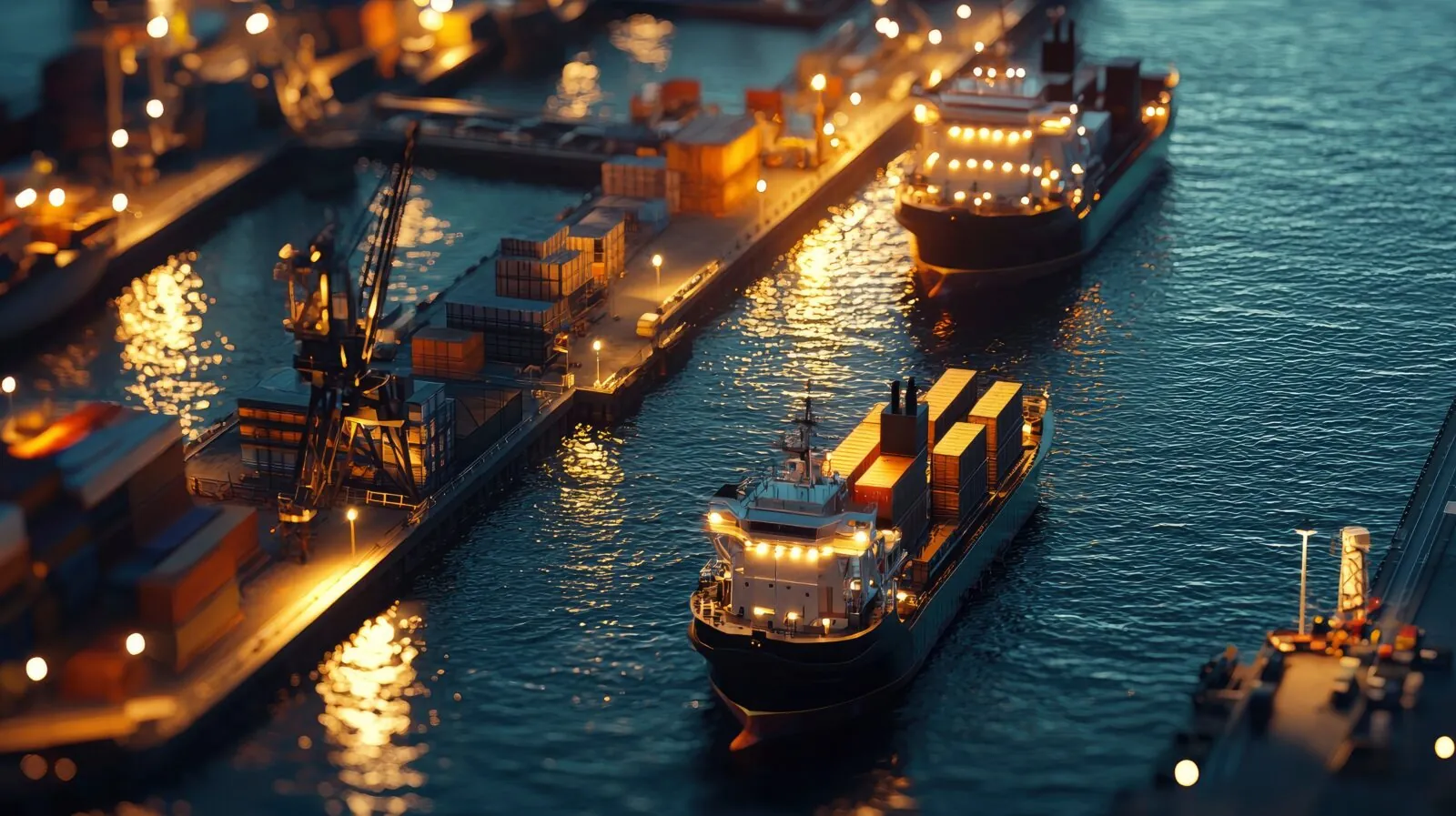Tender boat transfers are a crucial aspect of maritime travel, especially in cases where large vessels cannot dock directly at a port. These transfers involve smaller boats ferrying passengers and crew members between the main vessel and the shore, a process that, while routine, presents a range of safety challenges.
For passengers, stepping off a large, stable cruise ship or offshore platform onto a much smaller and often unsteady tender boat can be a high-risk maneuver. The difference in stability, size, and movement between the two vessels increases the potential for slip-and-fall incidents, sudden impacts, and overboard accidents.
Given these risks, both passengers and crew members must be aware of the dangers involved in tender boat transfers. This guide explores the most common injuries, the primary factors contributing to these accidents, safety precautions, and legal rights in case of an injury. Understanding these risks can help passengers travel safely and ensure that legal action can be taken when negligence is involved.
Common Injuries During Tender Boat Transfers
Slip-and-Fall Injuries on Tender Boats
One of the most frequent injuries during tender boat transfers occurs due to slipping on wet, unstable, or poorly maintained surfaces. The decks of tender boats can become extremely slippery due to water splashes, ocean spray, condensation, or oil residue. When passengers step onto these surfaces without proper footing, they are at high risk of losing balance and falling.
Injuries from slip-and-fall incidents can range from minor bruises to severe fractures or head trauma. Many passengers instinctively extend their hands to break a fall, leading to sprained wrists or broken arms. Others may fall backward and suffer concussions or spinal injuries.
How to Prevent Slip-and-Fall Accidents
Preventing slip-and-fall accidents requires awareness and preparation. Passengers should always:
- Wear non-slip footwear with rubber soles to provide better grip on wet surfaces.
- Walk slowly and cautiously, avoiding sudden movements.
- Use available handrails when boarding or disembarking to maintain balance.
- Follow crew instructions carefully to ensure a smooth and safe transition.
Crew members also have a responsibility to maintain safe boarding conditions by ensuring that:
- Deck surfaces are kept as dry as possible.
- Passengers are guided properly during embarkation and disembarkation.
- Safety notices regarding slippery conditions are clearly visible.
Impact Injuries from Sudden Boat Movements
Tender boats are smaller than large cruise ships and are therefore more susceptible to sudden movements caused by waves, wind, and docking procedures. When a boat moves unpredictably, passengers may lose their balance, hit hard surfaces, or be thrown against railings and seats.
Types of Impact Injuries
Passengers caught off guard by sudden boat movements may suffer:
- Muscle strains and joint injuries from trying to stabilize themselves.
- Severe bruising or contusions from hitting walls, railings, or hard seating.
- Back and spinal injuries caused by unexpected jolts.
- Hip fractures, particularly in older passengers who may be more vulnerable to falls.
How to Minimize Impact Injuries
Passengers should:
- Sit down whenever possible to avoid being thrown off balance.
- Hold onto stable structures, such as handrails, when standing or moving.
- Avoid standing near edges or in areas where sudden movements might push them into obstacles.
Crew members should provide clear safety instructions, ensuring that passengers remain seated while the boat is in motion and are aware of potential hazards.
Mooring Line and Propeller Injuries
Tender boat operations involve ropes, mooring lines, and propellers, all of which can cause serious injuries if not handled properly.
Mooring lines, which secure the tender boat to the dock or ship, are under high tension. If a line snaps or a passenger accidentally steps on or near a tightening rope, it can cause severe cuts, broken bones, or even amputations.
Similarly, propeller injuries are among the most dangerous accidents in tender boat operations. If a passenger falls overboard or gets too close to the boat’s stern, they may come into contact with a spinning propeller, leading to deep lacerations, loss of limbs, or fatal injuries.
How to Avoid Mooring Line and Propeller Accidents
- Passengers should stay in designated areas and avoid leaning over railings or touching mooring lines.
- Crew members must supervise docking procedures closely to prevent passengers from stepping into dangerous areas.
- Propeller zones should be clearly marked, and engines should be shut off before any passengers board or disembark.
Falls from Unstable Gangways
Gangways serve as the primary connection between a tender boat and the main vessel or dock. If a gangway is unstable, wet, or improperly positioned, passengers face a high risk of slipping, tripping, or falling into the water.
How to Stay Safe on a Gangway
Passengers should:
- Step carefully and slowly when crossing a gangway.
- Use handrails whenever available to stabilize themselves.
- Wait for crew confirmation that the gangway is secure before boarding.
Crew members should ensure:
- Gangways are properly secured before passengers use them.
- Slippery surfaces are dried or clearly marked with warning signs.
Passenger Overboard Accidents
Falling overboard is one of the most serious accidents that can occur during a tender boat transfer. Although rare, such incidents are often life-threatening, especially in rough sea conditions.
Why Do Overboard Accidents Happen?
- Passengers lose their balance while stepping onto or off the boat.
- The tender boat suddenly shifts, causing an unstable footing.
- A passenger leans too far over the edge without a safety barrier in place.
How to Prevent Overboard Accidents
To prevent overboard incidents:
- Passengers should remain seated while the tender boat is in motion.
- Crew should install safety barriers where necessary.
- Life jackets should be readily available and worn when required.
Legal Rights and Compensation for Tender Boat Injuries
Who is Responsible for a Tender Boat Injury?
If an injury occurs during a tender boat transfer, determining who is liable depends on the circumstances. Liability may fall on:
- Cruise lines, if they failed to provide proper safety measures.
- Tender boat operators, if their negligence caused an unsafe condition.
- Port authorities, if docking conditions were hazardous.
Steps to Take After a Tender Boat Injury
Passengers who suffer an injury should take the following steps:
- Seek medical attention immediately, even if the injury seems minor.
- Report the incident to the crew and request a written report.
- Take photographs of the scene, including unsafe conditions and injuries.
- Obtain witness statements from fellow passengers.
- Consult a maritime injury lawyer to explore legal options.
Can You File a Lawsuit for a Tender Boat Injury?
Yes, if negligence played a role in the accident, injured passengers may file a claim for compensation, including:
- Medical bills and treatment costs.
- Lost wages due to time off work.
- Pain and suffering caused by the injury.
Frequently Asked Questions (FAQs) About Tender Boat Injuries and Safety
Are tender boat transfers safe?
Tender boat transfers are generally safe when conducted under proper conditions with trained crew members guiding the process. However, risks such as slip-and-fall accidents, sudden boat movements, and unstable gangways can make them hazardous. Weather conditions, the condition of the tender boat, and the attentiveness of passengers and crew all play a role in safety.
What are the most common injuries that occur during a tender boat transfer?
The most common injuries during tender boat transfers include slip-and-fall accidents, impact injuries from sudden boat movements, mooring line mishaps, and overboard incidents. Passengers often suffer from sprained ankles, broken bones, concussions, and bruises due to unstable footing and shifting boats.
How can I prevent falling while boarding a tender boat?
To prevent falls, it is important to wear non-slip footwear, walk slowly, and use handrails when available. Paying attention to crew instructions and waiting for the boat to stabilize before stepping on or off also helps reduce the risk of falling. If the gangway or deck appears wet, it is best to proceed with caution and notify the crew of the potential hazard.
What should I do if I fall and get injured during a tender boat transfer?
If you sustain an injury, you should immediately notify the crew and seek medical attention, even if the injury seems minor. Documenting the accident by taking photographs and obtaining witness statements can be crucial if you need to file a claim later. Reporting the incident to the cruise line or boat operator ensures there is an official record of the accident.
Who is responsible if I get injured on a tender boat?
Liability depends on the cause of the injury. If the injury resulted from poor maintenance, unsafe docking conditions, or crew negligence, the cruise line, tender boat operator, or port authority may be held responsible. Maritime laws can be complex, so consulting with an experienced maritime injury lawyer can help determine who is liable and what compensation may be available.
Contact The Cruise Injury Law Firm Today
Tender boat transfers are a necessary but risky part of maritime travel. Passengers and crew must prioritize safety by following guidelines for proper boarding and disembarking.
If you or a loved one has suffered a tender boat injury, legal options are available. Contact The Cruise Injury Law Firm today to schedule a free consultation.



